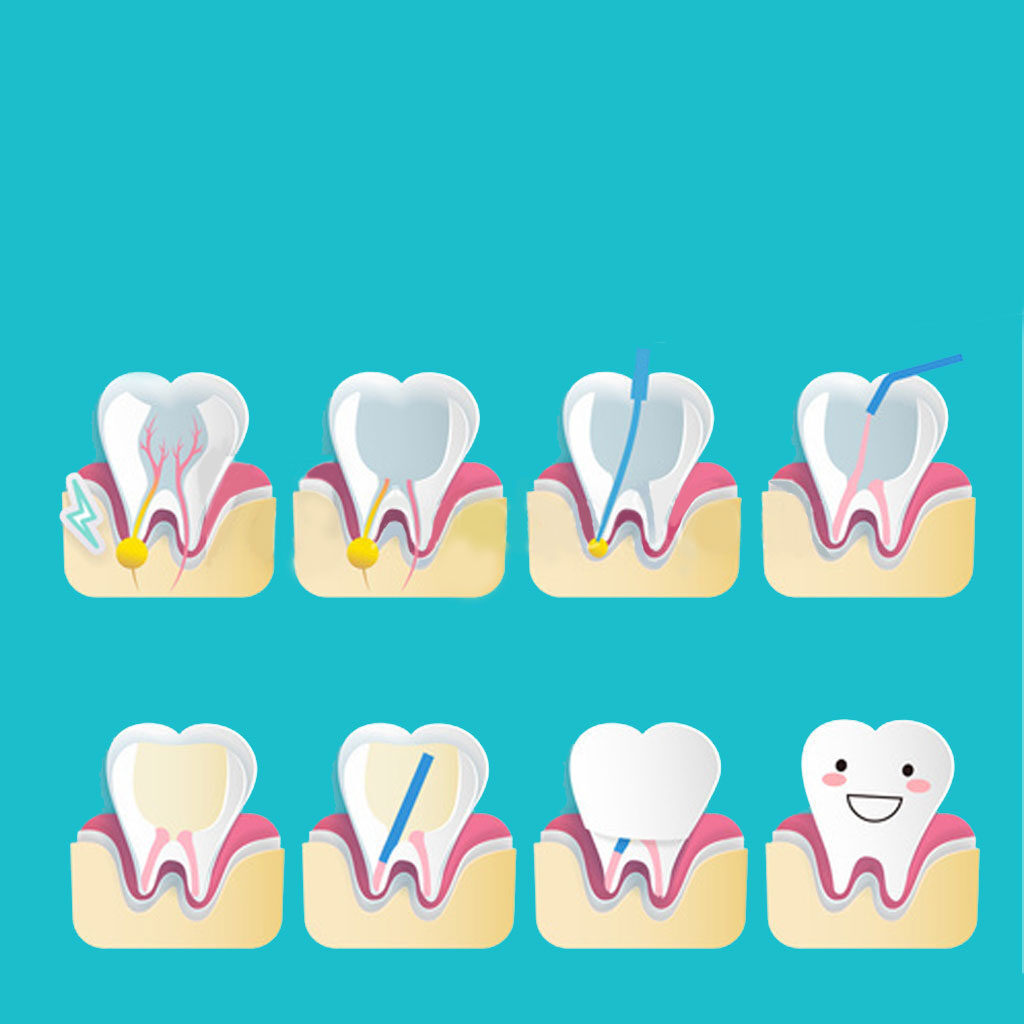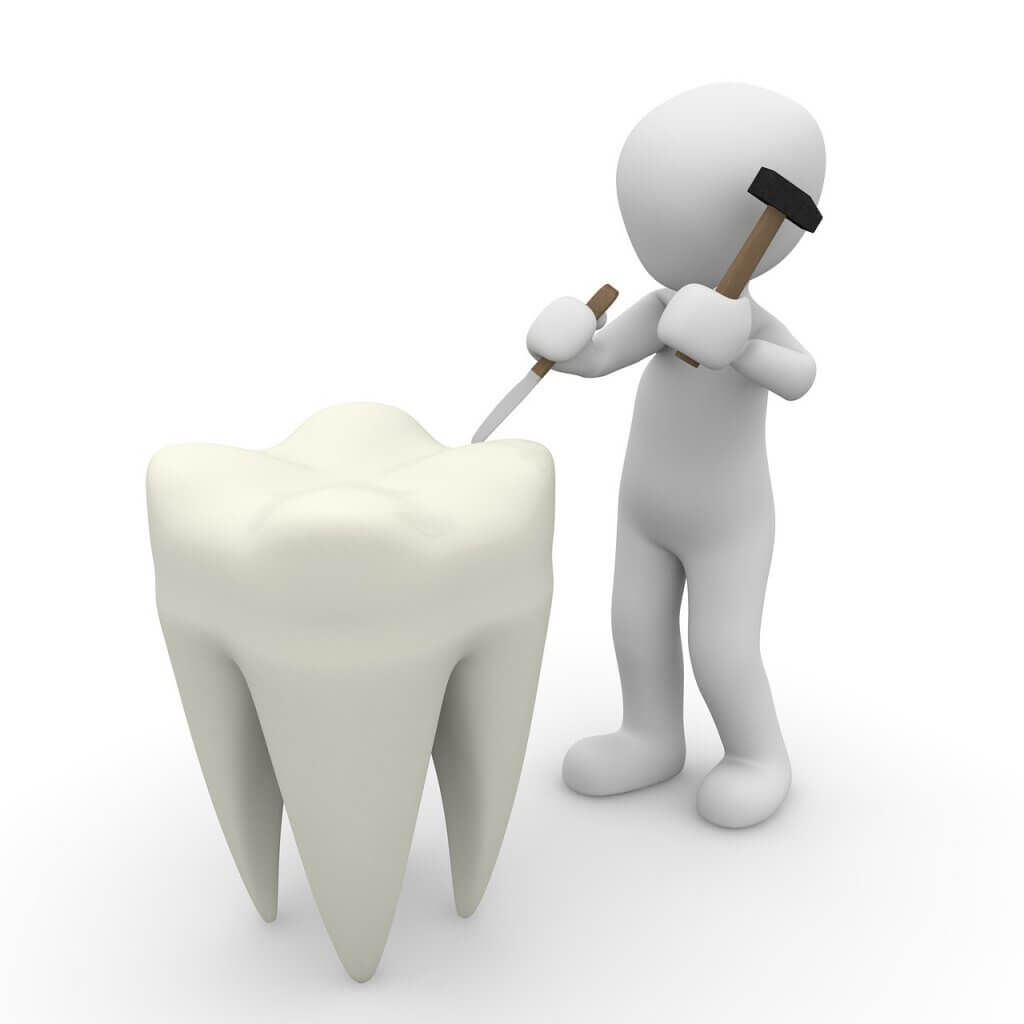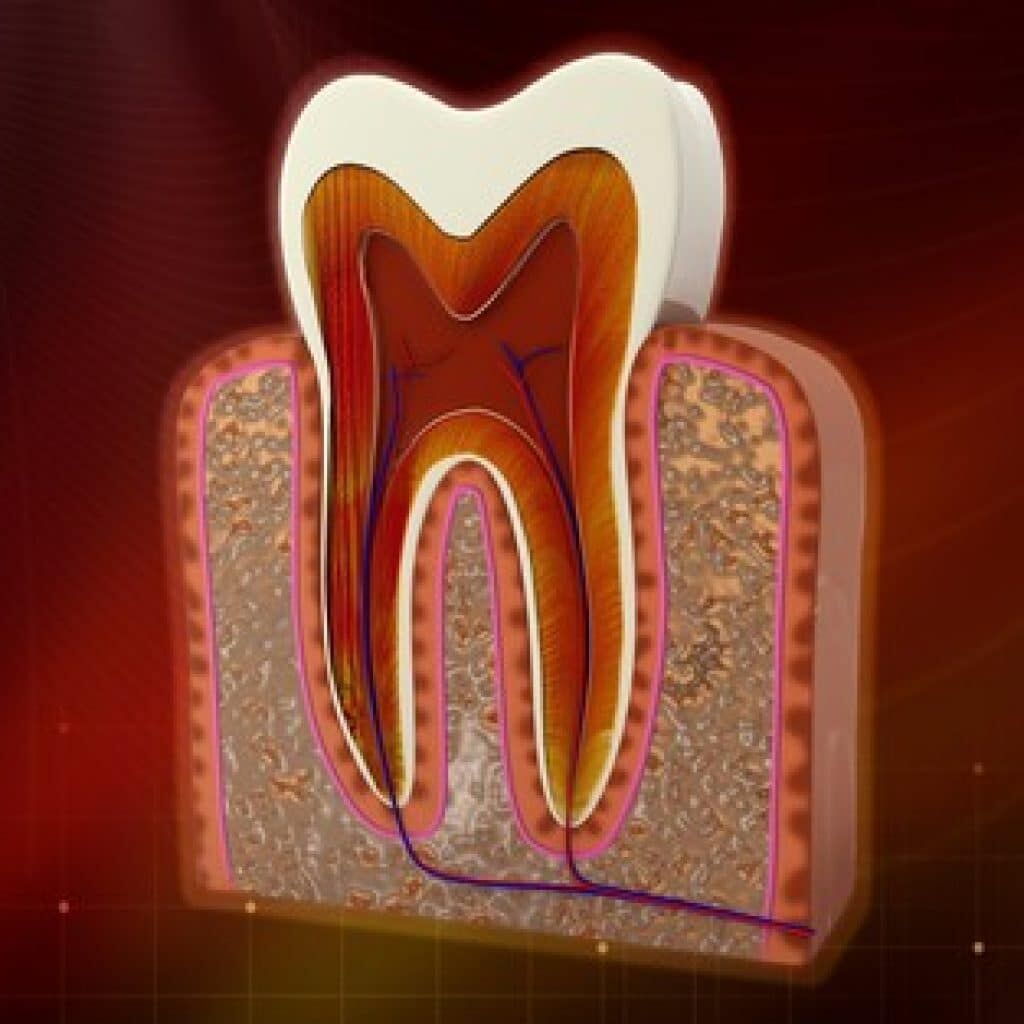Root Canal Treatment
What is Root Canal Treatment?
Root canal treatment, also called endodontics, is used to treat dental health hazards and is one of the most commonly used treatment methods. Pulpa is the soft tissue located in the center of the teeth which contains the nerve tissues and blood vessels. Usually, pain is felt when various types of damage reaches the pulpa due to cavities or different reasons. During the root canal treatment, pulpa is extracted, inflammation or other types of damage are refined, and after shaping the area, the gap is filled with a proper material by taking account of the teeth, teeth formation and the gingival tissue to treat the infection that develops due to inflammation that happens in the pulpa area. After root canal treatment, medical treatment might be used depending on the severity of inflammation in the area.
Root canal treatment, which is resorted in the case of cavities that are deep inside the pulpa, is completed by filling the gap that forms after cleaning the vessel and nerve tissues to prevent potential leakage inside the dental root and crown area, the actual and only visible part of the teeth, with proper materials. In addition, root canal treatment may also be used in cases of deformation due to various trauma in dental tissue (impact, fracture usually due to eating hard shell nuts, head trauma) which requires dental contouring operations. In some cases, the patient is facing dental abscess but may not be aware due to not feeling any pain. (Abscess is the accumulation of pus inside the teeth and gingiva. Abscess is typically caused by a bacterial infection in the soft tissue of teeth.) In those types of situations, root canal treatment may once again be used.


Root Canal Treatment Aftercare
Patients are required to get their periodical x-rays done every six months, and not to hinder their dental examinations. One of the most common complaints after root canal treatment among the patients, is the discolouring of the teeth after the operation. Therefore, restructuring during root canal treatment should be done precisely. It should be ensured that there aren’t any cavities left during the treatment. The teeth which got root canal treatment becomes more fragile compared to normal teeth due to fluid loss in dental tissue after root canal treatment.
For this reason, all examinations before and during the treatment should be approached comprehensively and a treatment protocol depending on these examinations should be pursued. It should not be forgotten that even though the infection and inflammation in the pulpa and the tissue of the teeth -which underwent root canal treatment- are cleansed, there is still a possibility of relapse. On the other hand, bacterial infection may arise if any mistakes or negligence occurs during the treatment and treatment may need to be repeated. That is why the root canal treatment should be done in dental clinics with reliable sterilization and expert dentists.
Let’s have some more information if you wish, about the teeth that needs root canal treatment before going into particulars of the treatment.
Teeth
Different forms of teeth depending upon the shape and functionality are located inside the mouth. An adult that which grew all of their teeth healthily is expected to have 32 teeth in their mouth in total.
Incisor teeth are sharp front teeth that help cut and tear down the food to a large extent and is indirectly an accessory digestive organ. Canine teeth have pointy ends that stretch downwards and help break the food down and keep it in one’s mouth. Molar teeth take on the task of grinding and chewing the food inside the mouth.
The teeth inside the mouth are separated into two as permanent teeth and baby teeth. Baby teeth starts to form before birth and in total there are 20 baby teeth. Baby teeth start to develop around the fifteenth or seventeenth week of the pregnancy and growing all of the baby teeth happens in 36 months.
Teeth starts to show up in the mouth by piercing the gum after 6 or 9 months of birth and this process is completed at the age of two. At the age of six, starting from the bottom incisor teeth, the baby teeth fall out and are replaced with permanent teeth as it would happen in a healthy mouth. At the age of 12, all of the baby teeth has fallen out.

Healthy Teeth
A tooth which does not have any damage on the enamel and haven’t formed any cavities is deemed to be healthy. As long as the enamel of the tooth does not have any deformation or any other damages due to various reasons and no openings directed to dentin and the pulpa, it is not expected for the tooth to have any kind of damage or infections.
Decayed Teeth
Teeth cavity happens due to damage caused to enamel by the acid that might build up in our mouth. Acid builds up as a result of the food we eat and the mouth flora. There are many harmless, healthy bacteria in every person’s mouth as it should be naturally. Even though they are harmless, if not cleaned up regularly, these bacteria build up on the surface of the teeth and creates dental plaque. Dental plaque builds up in cracks and fractures in teeth, cavities, in between the teeth, inside the clefts behind the teeth and in between the gum and the teeth. Some bacteria in the mouth transforms the sucrose and carbohydrates we get from food into an acidic form as a result of their natural cycle. This acidic build up dissolves the minerals on the surface of the teeth and causes microscopic holes. As we already explained, cavity may reach the dentin after going through the enamel and might progress and reach the pulpa which holds the nerve tissues. Pain is felt in the teeth and usually this pain is associated with the root surface coming up due to the inflammation caused by the bacteria. Cavities might not be obvious before reaching the pulpa but some sensitivity and sharp pain might be felt when consuming sugary and hot or cold food or drinks. Dentists can easily detect cavities by making routine inspections. They examine the cavities thoroughly and if any deformation is present, they might request an x-ray. The degree, location and contagion of the cavity are realized through these examinations. If the cavity hasn’t damaged the enamel yet, the damage caused by acidic build-up is hindered and the teeth are left to repair itself. If the enamel is deformed by the cavity, there is no way to recover the teeth anymore. The treatment should start as soon as possible.
Causes of Pulpa Damage
There might be a lot of reasons of pulpa damage. The most commonly faced type of damage is caused by inflammation due to bacteria onset to pulpa. Pulpa damage, which sometimes happens due to trauma such as hard impact, is pretty significant due to the pulpa containing millions of vessels and nerve endings. Even though the enamel has a pretty strong texture, it might be weakened by damage over time and the pulpa might be damaged or prone to all types of risks.
In addition to that, dents starting to form particularly in the middle of the teeth and going into the centre, are called dental fistula. These dents may be caused by any reason such as trauma, fracture or cracks. Dental fistula might be a serious issue if it has reached the pulpa or it might cause mild inconvenience if it is not that deep of a dent. In both situations, it is understood that the enamel is exceeded and the pulpa is threatened because of the fistula. Root canal treatment is applied in these types of situations. The pulpa should be cleansed, reshaped and closed back up before the infection shows up or during the early period of infection.
In order to remind, root canal treatment is cleansing of the infection and inflammation, caused by different reasons, with proper methods, reshaping of the tissue, filling the tissue with proper materials and making the tissue functional once again.
Situations that require Root Canal Treatment
The treatment should get started as soon as possible in situations that require root canal treatment. Otherwise, increasing pressure and swelling might occur in the teeth as a result of infection and numbness might be felt in the mouth when the teeth and tongue tissue gets damaged. It should not be forgotten that the infection will inevitably move to other organs such as the heart through the nerve and vessel tissues in the area if not treated early enough. Before and during the treatment, the dentist prescribes a suitable antibiotic considering the infection’s progress and at which stage the treatment is at. These antibiotics provide great convenience to relieve the infection in the tissue of the teeth and to eventually get rid of it.
Stages of Root Canal Treatment
To start off the root canal treatment, findings of the initial examination and x-ray examination are reviewed. The pulpa’s state is reviewed considering the extent of damage in the teeth due to cavity, depth of the canal and how much the infection has progressed. Then, the patient is anaesthetized to start off the treatment. The patient won’t feel any pain during the operation thanks to local anesthesia. The teeth that will get treated are isolated from the surrounding tissues, and the root canals are reached through the endodontic cavity. Following this stage, the canal is disinfected, cleansed and restructured. The operation is completed by filling the new, healthy canal with proper materials.
What kind of symptoms might be seen after Root Canal Treatment?
During the 1-2 week course that follows the root canal treatment, some mild pain that lasts for one or two days is expected. But failure of the treatment may also be in question due to various reasons such as the fill material not being sufficient, filling not settling in or even the infection under the filling not being cleansed completely. Except these types of situations, if the patient does not have any other specific situation that might affect him or her, there is no reason to not fully heal after the treatment.
Could the teeth that got root canal treatment ache again?
During root canal treatment, some pain for a course of one or two days is expected due to cleansing and restructuring of the pulpa and the filling made, and this pain is considered normal. After this course, it is expected that the teeth structure and mouth integrity to go back to normal. However, in some situations, possibilities of the infection not getting noticed right away or infection not getting cleansed fully due to root canal treatment being ineffective could also cause some pain. Additionally, even if the root canal treatment was successful, just like any other healthy teeth, the teeth that got root canal treatment could get infected or decayed once again and that might once again cause pain.
Could the pregnant get root canal treatment?
Due to the nature of root canal treatment, local anesthesia is required. Therefore, the operation should be done carefully and within specific standards, and the choice of anesthetics should be made carefully.
How long does Root Canal Treatment take?
The operation usually takes between half an hour and one hour and is a single session treatment. However, in some situations -depending upon inflammation’s spread phase, size of the cavities in teeth, patient’s ability to respond to treatment and recovery speed- it might be done in several sessions according to the dentist’s opinion.
Is Root Canal Treatment Dangerous?
Nowadays, it has been observed that root canal treatments made with modern techniques do not carry any health risks. Also, it doesn’t have any risks concerning the jawbones as root canal treatment is the process of cleansing, restructuring and filling of the pulpa.
Dental Care after Root Canal Treatment
The teeth that got root canal treatment might be sensitive for a while afterwards. The patient is informed about this situation and the course is explained by the dentist. It is expected from the patient that they do not do any hard chewing with the affected area of the teeth and consume any acidic beverages. After the teeth settles in the tissue, it can be functional and cleanable like normal teeth. The functionality and the care of the affected teeth is same with healthy teeth even though it is not a real teeth. However as told earlier, the patient is expected to clean their teeth regularly, refrain from smoking, not to consume acidic beverages and not to consume sugary food too much. In addition to all of this, the excess plaque between the teeth should be cleaned regularly by flossing.
Situations where root canal treatment cannot be applied
High risk group patients which are prone to complications that might happen due to root canal treatment.

